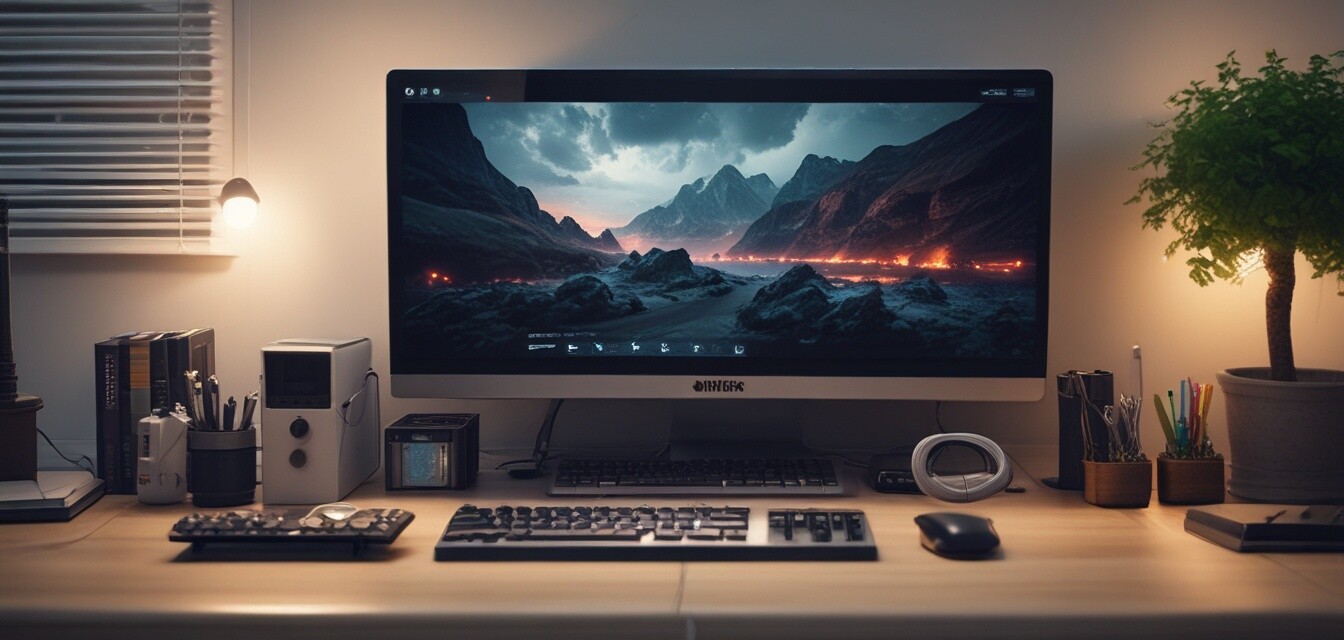
Ten essential cable management tips for remote workers
In today's remote work environment, maintaining a tidy workspace is essential not just for aesthetics but also for productivity and focus. One key aspect of this is effective cable management. Below, we’ll delve into ten actionable tips aimed at helping remote workers organize their cables efficiently and create a more conducive work environment.
- Organizing cables enhances productivity and focus.
- Invest in various cable management tools for optimal results.
- Regular maintenance is vital to keep your cable setup organized.
- Create a designated space for each cable to avoid clutter.
- Utilize vertical space for advanced cable management solutions.
1. Assess your current cable situation
Start by evaluating your existing cables. Identify which cables are essential and which can be removed. This step simplifies your setup and allows you to focus on what truly matters.
2. Use cable clips and holders
Cable clips and holders are small yet impactful tools for organizing cables on desks. They prevent tangling and keep things neat. Check out our collection of cable clips and holders for options that can transform your workspace.
3. Implement cable organizer boxes
Cable organizer boxes are excellent for concealing power strips and excess cable length. They offer a clean look and simplify access to ports. Consider this range of cable organizer boxes for various styles and sizes.
4. Opt for cable sleeves and covers
Cable sleeves and covers help to bundle multiple cables together, making your workspace look more organized. They're also helpful in preventing wear and tear on cables. You can find various options in our cable sleeves and covers section.
5. Utilize cable ties and straps
Cable ties and straps are perfect for grouping cables and preventing them from spreading out. They allow for customization in length and are adjustable, giving you flexibility in your setup.
| Type | Best Use | Recommended For |
|---|---|---|
| Cable Clips | Attaching cables to surfaces | Desks and Walls |
| Organizer Boxes | Concealing excess cable length | Home and Office |
| Cable Sleeves | Bundling multiple cables | Complex setups |
| Cable Ties | Grouping cables | Flexibility in setups |
6. Consider a cable management kit
A cable management kit includes various tools designed to work together, making it an efficient choice. Kits often include clips, sleeves, and zip ties, giving you everything you need in one package.
7. Maintain a clutter-free workspace
Regularly check your cables and tidy up any disarray. Making this a part of your routine can help you maintain long-term order. You may also find insights in our Practical Tips category.
8. Use vertical cable management solutions
Utilizing vertical space can free up desk areas. Wall-mounted cable channels or under-desk trays can help you hide cables without taking up valuable space.
9. Personalize your cable setup
Your cable management system should reflect your personal style. Use colored zip ties or patterned sleeves to bring a little personality to your workspace while maintaining organization.
10. Establish a regular maintenance routine
Once you implement your cable management solution, create a routine for maintenance. Schedule time every month to reassess your cables and make adjustments where necessary.
Pros
- Improved productivity and focus
- Enhanced aesthetic appeal of your workspace
- Reduced clutter and safety hazards
- Increased cable lifespan due to reduced wear
Cons
- Initial investment in organizers may be needed
- Time required for setup and maintenance
Conclusion
Implementing these ten essential cable management tips can greatly enhance your remote working experience. Not only does it help create a clean and organized workspace, but it can also foster productivity and a positive mindset. Remember, maintaining your cable organization is an ongoing process, so revisit these tips regularly to ensure continued success.
Tips for beginners
- Start small: Begin with one or two cables before moving on to larger clusters.
- Label your cables: Use labels to easily identify which cable belongs to which device.
- Don’t be afraid to adjust: If a solution isn’t working for you, try something new.